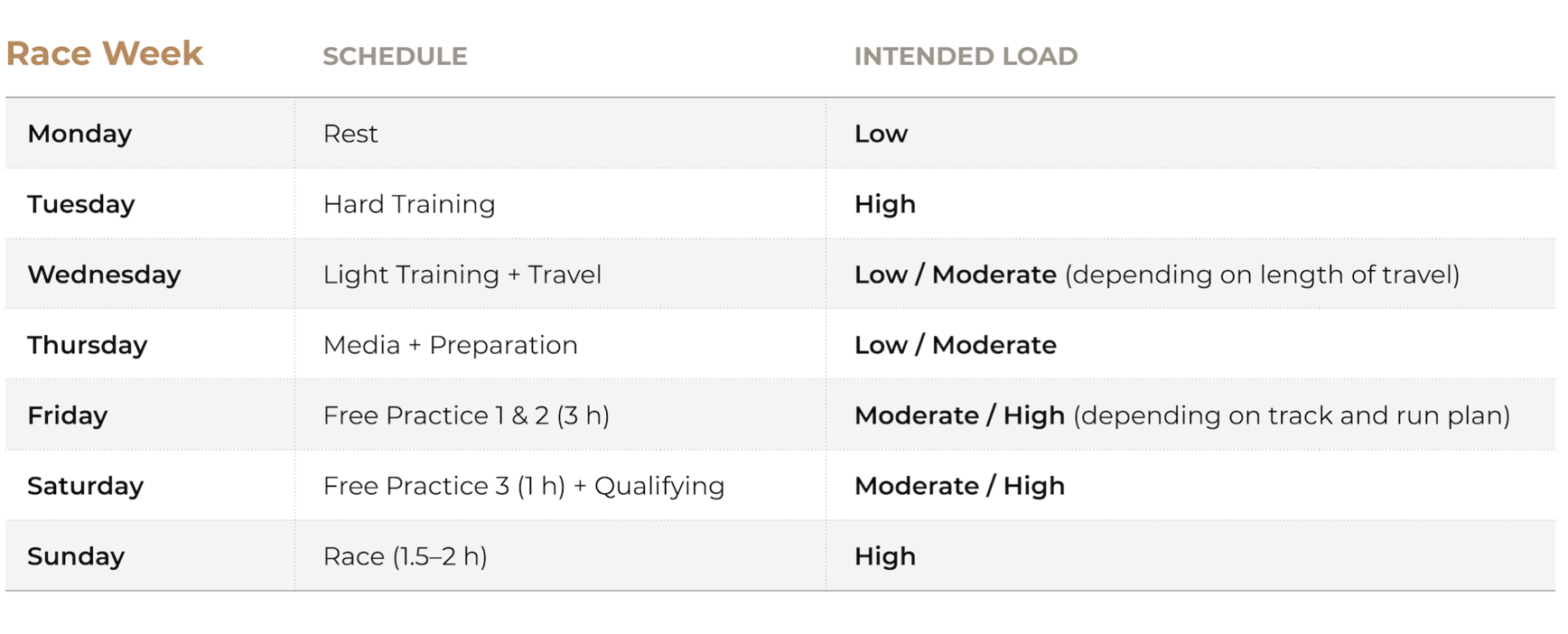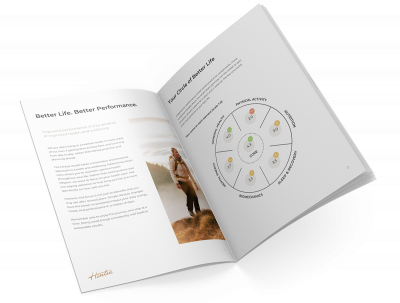Managing Energy and Effort for Optimal Performance – Learnings from Professional Athletes

Within professional sport the ability to manage energy and effort in order to produce optimal performances at specific times – known as periodisation – is arguably one of the most important skills to possess. This ability to reproduce peak performances over 2-3 decades will have a huge effect on an athlete’s career – and subsequently their financial gains. We believe the same can be true for business professionals and the companies they represent.
This is an area of great interest at Hintsa and one Hintsa’s Performance Scientist James Hewitt has researched and spoken about in depth. What can we learn from different sports that can potentially help us in the corporate arena?
Periodisation in Sport
Periodisation is the systematic planning of athletic training and can be broken down into three cycles; Macro, Meso and Micro. The macro cycle is the big picture or long term plan; in Olympic sports it can be a 4 year cycle but mostly it is annually. The meso cycle is shorter, typically around a month and the micro cycle is usually a week. Can we apply this sort of planning to knowledge work as well?
Cycling (The Macro cycle)
In a previous blog article, James Hewitt referred to a study about a professional cyclist, Thibaut Pinot. This study monitored Pinot’s annual training hours over a 6 year period, in which it progressed from 515 to 942 hours, culminating in him becoming the youngest rider since 1947 to finish in the top 10 of the Tour de France. This is a fantastic example of long term periodisation over several Macro cycles. The coaches carefully manipulated the time and intensity Pinot trained at to ensure continued performance progression, whilst avoiding overtraining.
Can we replicate this for knowledge workers? If Macro cycle workload was managed and manipulated like Pinot’s coaches did, could we be more productive, as well as avoiding burnout? Could this increase profit?
Formula One (The Meso and Micro cycles)
In 2020 Formula One was supposed to have 22 races, including a period of 4 races in 5 weeks in Azerbaijan, Canada and Europe. It is essential during a busy macro cycle like this to break it down into well managed Meso and Micro cycles.
This is a very basic outline of a typical race week, with a simple guide of the intended load on the driver:

The priority of this week is to deliver the athlete in the best possible condition, physically and mentally, to the 3 day driving period from Friday to Sunday. As this structure will be repeated over 2 or 3 consecutive weeks there are some specific tactics needed:
- Planned rest days. Around periods of high load this is vital to ensure mental and physical regeneration. Without this, mental and physical fatigue would accumulate, adversely affecting performance and health.
- Physical training. Even during busy competition periods this must be maintained as it is vital for optimum performance, health and sleep. Tuesday is the narrow window of opportunity for this. The driver has just had a rest day, and there is still enough time for DOMS (‘Delayed Onset of Muscle Soreness’ associated with physical regeneration) to occur, (peaking at 24-48 hours) without it affecting driving on Friday.
- Load Manipulation. Several days within the schedule are open to fluctuations in load, similar to unpredictable days in the office or travelling. With slick planning around travel and daily routine stress and subsequent load can be kept to a minimum. For example; making sensible travel arrangements such as not travelling early in the morning or overnight can greatly reduce stress. Also, keeping regular breaks within the daily routine, including a proper lunch break, time for exercise and keeping to your own personal daily rhythm will help maintain freshness.

Using Periodisation to Optimise Performance
Within sport, periodisation is utilised to avoid overtraining, thus optimising performance. In the corporate world, this is the equivalent of avoiding burnout and improving productivity.
These two things could have a significant impact on both the health and wellbeing of the individual and the success of the business. I would strongly encourage you to think about your working week, month and year:
- Could you use periodisation to optimise your health and personal performance?
- Are you arriving at high stress periods of work in the best possible condition?
- Are you taking sufficient rest after these periods of high load?
Interested in our performance coaching services? Leave your contact details below and we’ll be in touch with you.



